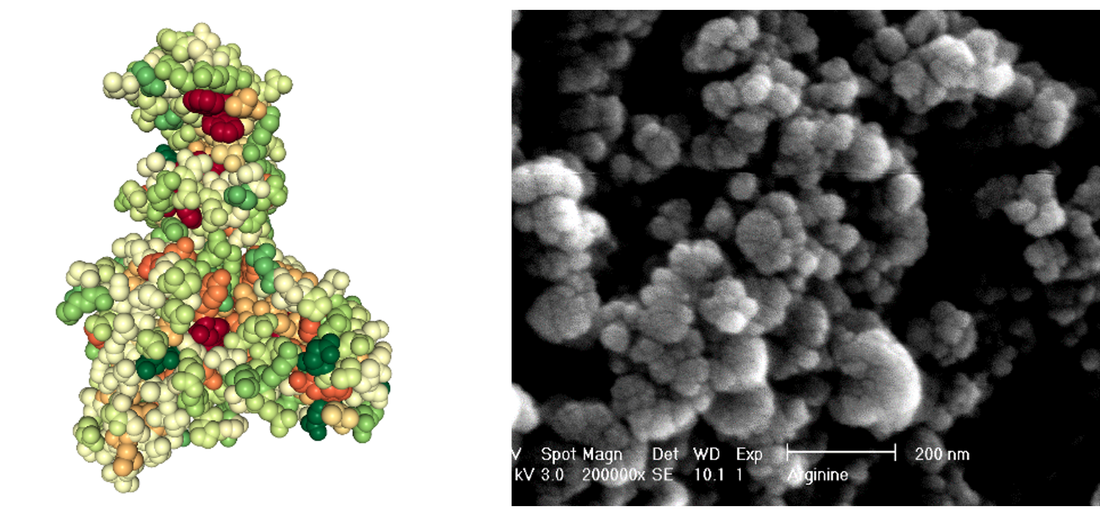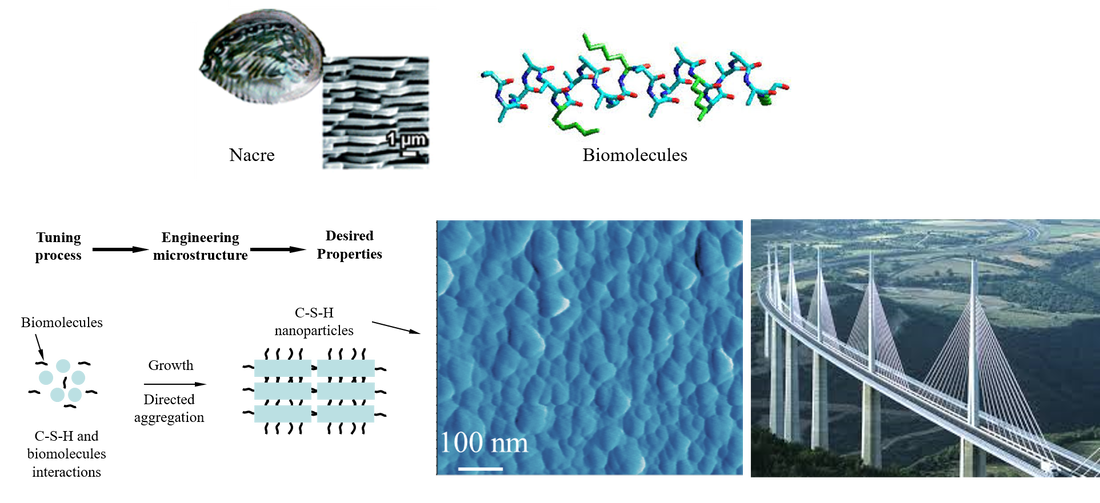Bio-Inspired Infrastructure Materials - Genetically Engineered Cementitious Materials
Nature exhibits materials with superior mechanical and functional properties. These properties are enabled through interactions between biomolecules and inorganic phases resulting in the formation of specific phases and structures across multiple length scales in biological materials. C-S-H comprises the primary component of the hydration product and plays a fundamental role in determining the mechanical and long-term characteristics, including strength, ductility, shrinkage and creep, of cement-based materials. The goal of this research thrust is to understand and identify specific biomolecules with an ability to control and tune the formation, microstructure, and properties of C-S-H to achieve the desired performance in cementitious materials.
Smart and Self-Healing Infrastructure Materials
Hydrogels can be used to encapsulate certain microorganisms that facilitate calcium carbonate (CaCO3) biomineralization. When used in cementitious materials, hydrogel encapsulated micro-organisms produce CaCO3 precipitation, which fills and binds cracks in the cementitious matrix imparting a self-healing property to the infrastructure material. Our effort is directed towards understanding the mechanisms of bacteria-induced CaCO3 biomineralization and establishing the relevant process-structure-property relations.
In-Situ Materials For Space Infrastructure
Enabling technologies to develop space habitats and infrastructure for safe, efficient, sustainable, and productive long-term human exploration missions has been identified as one of the top technical challenges for 2015-2035 in the NASA’s Human Exploration Destination Systems Roadmap. The objective of this research thrust is to investigate the feasibility of establishing space habitats utilizing the Moon’s in-situ materials.
Multi-Scale Deformation and Failure in Structural Polycrystalline Metallic Alloys
The focus of this research thrust is on understanding the deformation mechanisms and failure processes across nano-micro-macro scales in polycrystalline metallic alloys through experiments and numerical simulations. The hybrid experimental-numerical approach enables us to obtain a physics-based understanding of the underlying mechanisms determining deformation and final failure in these materials.
Mechanics of Energy Materials
Mechanical failure and crack formation arising from large volumetric expansions during lithiation and delithiation is the primary cause of capacity fade and poor cycle behavior of metallic anodes in lithium-ion batteries. This research thrust aims to understand the process-microstructure-mechanical properties of metallic anodes, which is of significant importance in mechanical reliability assessment of metal anodes.








